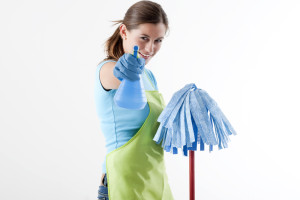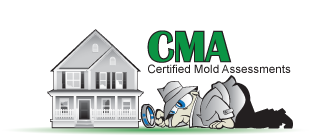 If you want to prevent mold infestation in your home—and all the nagging problems that go along with it—the most important thing you can do is understand the causes. For example, mold loves humidity. That means you want the air to be ventilated and dry inside your home. Mold also thrives on damp or waterlogged surfaces. That means it’s crucial to address any water issues—such as leaky pipes—immediately.
If you want to prevent mold infestation in your home—and all the nagging problems that go along with it—the most important thing you can do is understand the causes. For example, mold loves humidity. That means you want the air to be ventilated and dry inside your home. Mold also thrives on damp or waterlogged surfaces. That means it’s crucial to address any water issues—such as leaky pipes—immediately.
Yet another aspect of mold prevention is cleaning. There are a few cleaning habits in particular that make a big difference when it comes to keeping mold at bay. Run through this list and ask yourself if there are any obvious gaps in your mold prevention strategy.
1. Maintain a dry bathroom
Most people clean their bathrooms periodically instead of taking a ‘routine maintenance’ approach. Part of your bathroom maintenance should be the elimination of excess moisture. Think about all the water constantly left on your tiles and shower stalls (or even the back of the toilet!). Think of the moisture in the air from those wet towels draped over the rack. All this moisture is exactly how bathroom mold growth starts.
Try using a special towel or squeegee to remove moisture in the bath or shower, and dry the moisture after the day’s last shower. When it comes to drying towels, do it outside in the sunlight whenever possible. At the very least, spread towels out thoroughly after use and change them often.
2. Keep your plants mold free
Houseplants are a little-known but common source of mold growth. Mold colonies love the soil, as it constantly receives moisture when you water the plant. Mold has also been known to set up shop on the leaves of certain plants.
To prevent these things from happening, check the soil for signs of mold ever time you water the plant. If you find mold in the soil, remove it carefully. You can also add plant-friendly fungicides to the soil for additional protection. For the leaves, use a damp cloth to gently clean the leaves. Then observe to see if the problem recurs. Sometimes mold just doesn’t want to stop growing in or around a plant. If this is the case, it’s time to get rid of the plant altogether.
3. Give your carpets a deep cleansing
Did you know that mold can easily grow in carpet? This is especially true if the carpet is long overdue for a professional cleaning. If mold is clearly visible on your carpet, calling a mold remediation specialist is the best thing you can do. This way you’ll know if the mold has spread to other areas where you can’t see it. Otherwise, if your carpet has no visible mold, schedule a professional cleaning at least twice a year to prevent unwanted mold growth—it’ll also make the air in your home much fresher!
4. Clean upholstered surfaces
Often times, people vacuum the floors and dust the shelves, clean the kitchen and bathroom, yet completely skip over the upholstered items in their homes. Items (such as sofas and chairs) that are upholstered are at risk of mold infestation. Subjecting your upholstery to routine cleanings will prevent this from happening. If you do notice mold on your upholstery, the safest strategy is to remove the item from your home and then follow a careful mold removal protocol. Better yet, call in a professional to do it for you.
Everyday mold protection
Keeping a nice, clean house will definitely help you to stay mold free at home. Mold is a big fan of moisture, bacteria, dirt, dust, and stagnant air. By reducing or eliminating these factors, you eliminate mold’s chances of taking hold.
If mold has already made an appearance, attacking it directly with ordinary cleaning techniques is not your best bet. Mold is highly resistant to many common cleaning solutions, and the scrubbing action simply moves the spores around and helps them multiply. Any moderate or serious mold infestation should be handed over to a professional mold remediation specialist who knows how to tackle the problem at its roots. But if you keep a clean house, hopefully you’ll never get to that point!
Thanks for reading, and please feel free to comment below.

